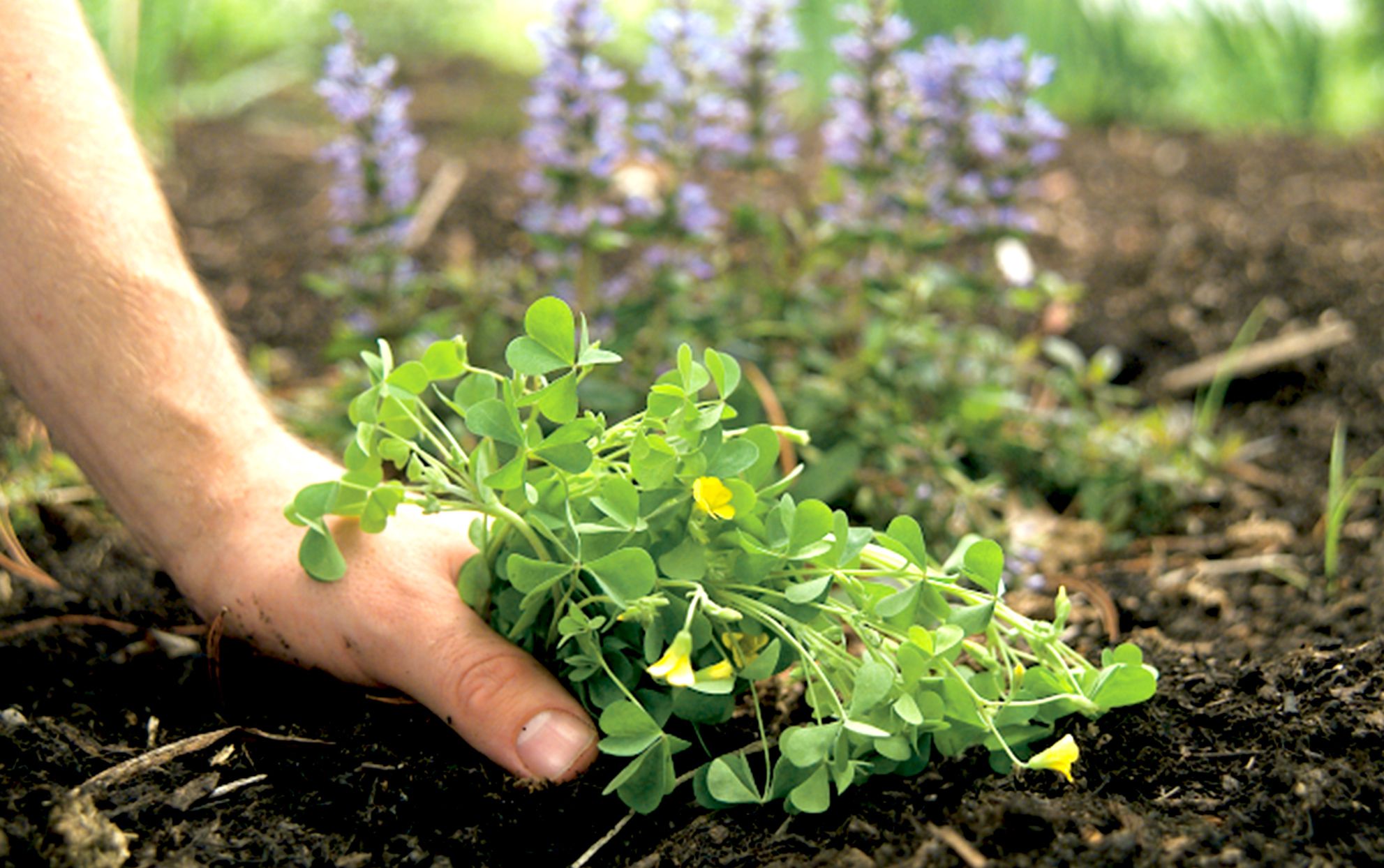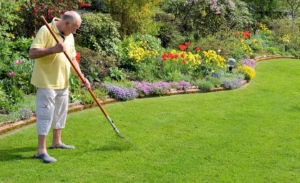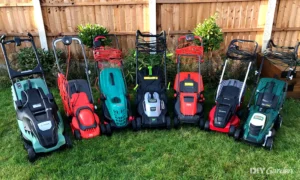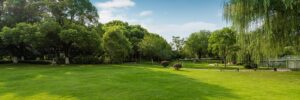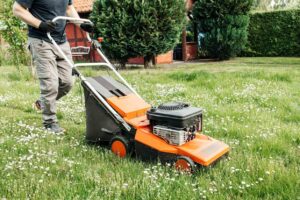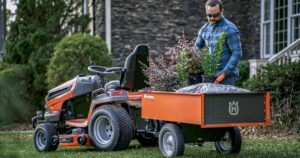Common Weeds in Lawns and Gardens: Identification and Control
As a gardener or homeowner in the United States, you’re likely familiar with the constant battle against unwanted plants that seem to appear overnight. These uninvited guests compete with your carefully cultivated flowers, vegetables, and lawn for nutrients, water, and sunlight. Understanding how to identify and effectively manage these common weeds can save you time, money, and frustration.
Understanding Weed Biology and Life Cycles
Before diving into specific weeds, it’s important to understand what makes these plants so persistent and difficult to control. Weeds are remarkably adaptive plants that have evolved various survival strategies:
- Prolific seed production: Many weeds produce thousands of seeds per plant
- Deep or extensive root systems: Making complete removal challenging
- Rapid growth rates: Allowing them to outcompete desirable plants
- Dormancy mechanisms: Seeds can remain viable in soil for decades
- Multiple reproduction methods: Many spread by both seeds and vegetative parts
According to the United States Department of Agriculture, weeds cost the U.S. economy over $34 billion annually in control costs and crop losses. Understanding the enemy is the first step in winning this battle.
15 Common Weeds in American Lawns and Gardens
Broadleaf Weeds
1. Dandelion (Taraxacum officinale)
You’ve certainly encountered the bright yellow flowers of dandelions that quickly transform into puffy seed heads. These perennial weeds have a deep taproot that can extend up to 10 inches into the soil, making them difficult to eliminate completely. While many consider dandelions a nuisance, their leaves, flowers, and roots are actually edible and nutritious.
Control methods: For small infestations, hand-pulling works well, but ensure you remove the entire root. For larger areas, broadleaf herbicides can be effective when applied during active growth periods.

2. Clover (Trifolium spp.)
White clover, with its distinctive three-leaf pattern and small white flower clusters, is common in lawns throughout the U.S. This perennial weed spreads via seeds and creeping stems that root at nodes. Interestingly, clover was once deliberately added to lawn seed mixes as it naturally fixes nitrogen in the soil.
Control methods: Maintaining proper lawn fertilization can discourage clover growth. Selective herbicides labeled for clover control are effective, but many gardeners actually choose to keep clover for its beneficial aspects.
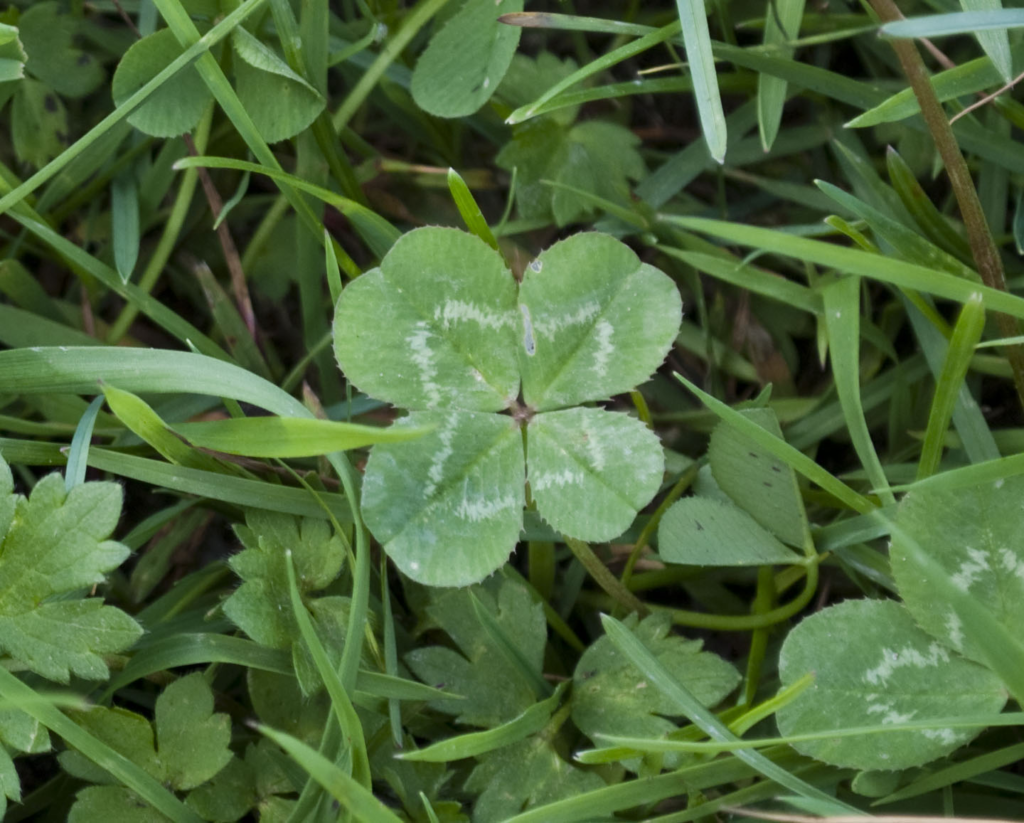
3. Plantain (Plantago major & Plantago lanceolata)
Plantain comes in two common varieties: broadleaf and buckhorn (narrow-leaf). Both feature distinctive leaf veins and produce tall seed stalks. These perennial weeds thrive in compacted soils and poorly maintained lawns.
Control methods: Aerating compacted soil can help prevent plantain establishment. Hand-pulling before seed production is effective for small numbers, while broadleaf herbicides work for larger infestations.
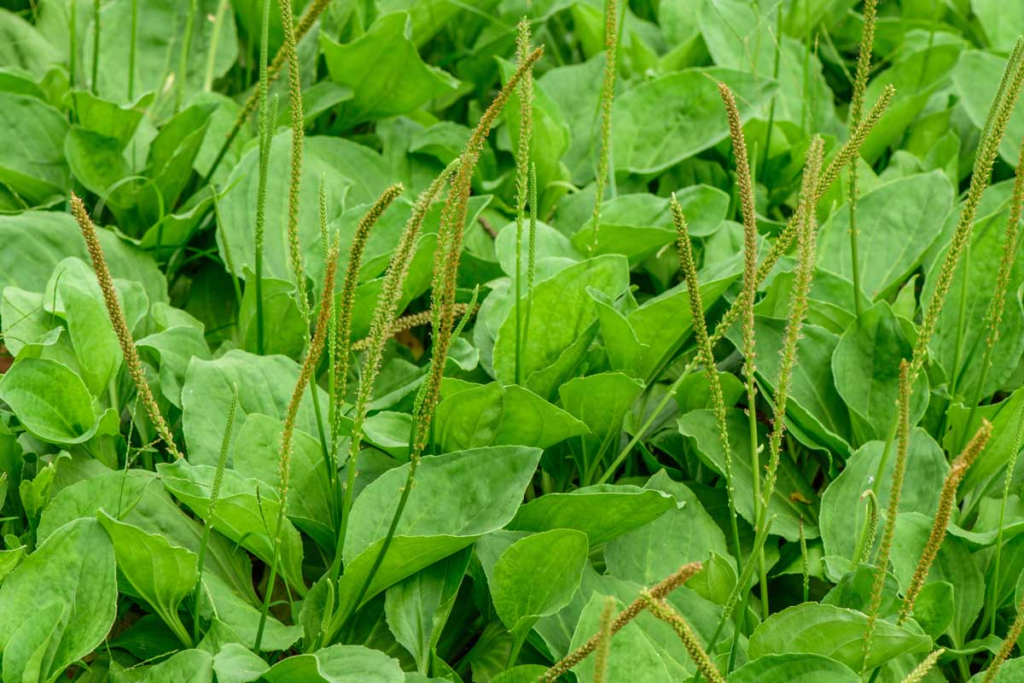
4. Chickweed (Stellaria media)
This annual weed features small, star-shaped white flowers and forms dense mats in cool, shady, moist areas of your lawn or garden. Despite its delicate appearance, chickweed can be quite aggressive.
Control methods: Improving drainage and reducing shade can make areas less hospitable. Pre-emergent herbicides applied in fall can prevent germination. For established plants, hand-pulling works well due to their shallow roots.
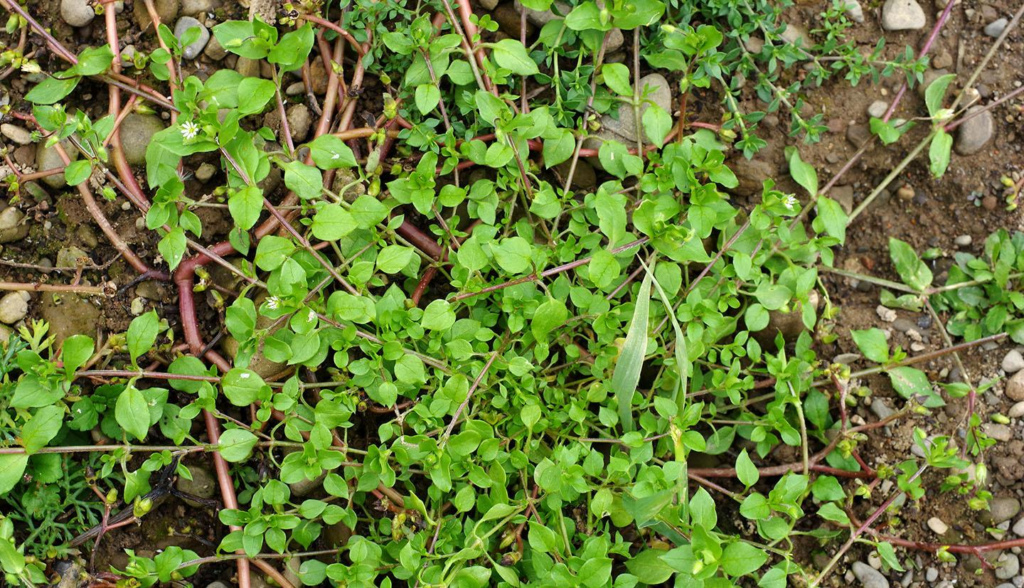
5. Ground Ivy/Creeping Charlie (Glechoma hederacea)
With its scalloped leaves, purple flowers, and square stems, ground ivy forms dense mats as it spreads by seeds and creeping stems. Its ability to root at nodes makes it particularly difficult to control.
Control methods: Improving soil drainage and increasing sunlight exposure can help. Selective broadleaf herbicides containing dicamba are most effective when applied in fall.
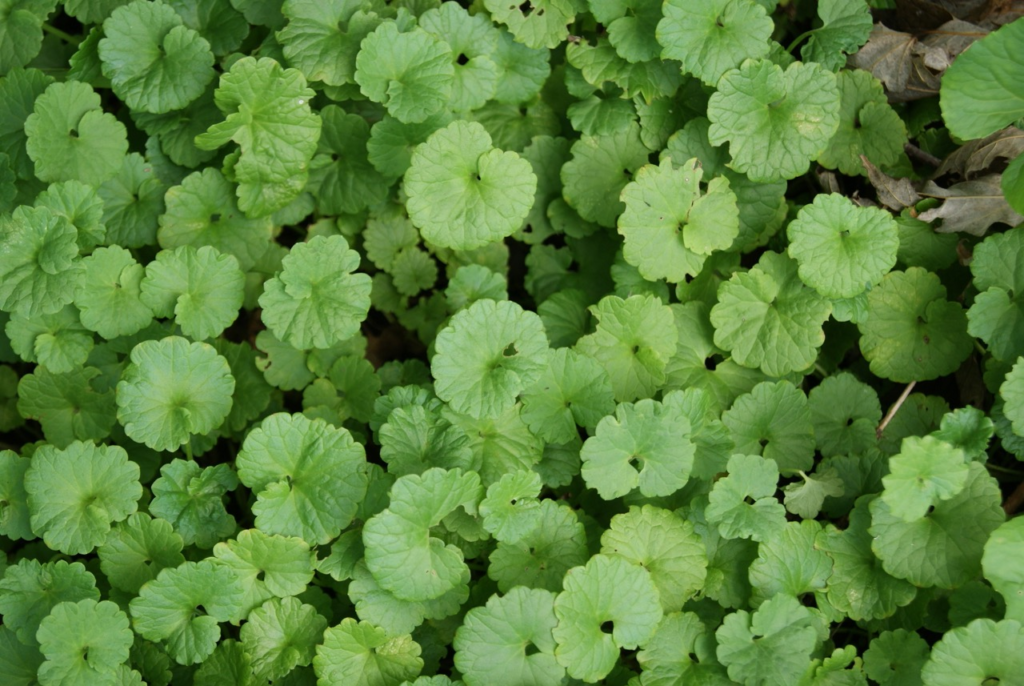
Grassy Weeds
6. Crabgrass (Digitaria spp.)
This annual grass weed germinates in spring when soil temperatures reach about 55°F. It grows in a prostrate, crab-like pattern with stems radiating from a central point. By midsummer, crabgrass can dominate thin or stressed lawn areas.
Control methods: According to the United States Environmental Protection Agency, maintaining a thick, healthy lawn is your best defense. Pre-emergent herbicides applied in early spring before germination can be highly effective.
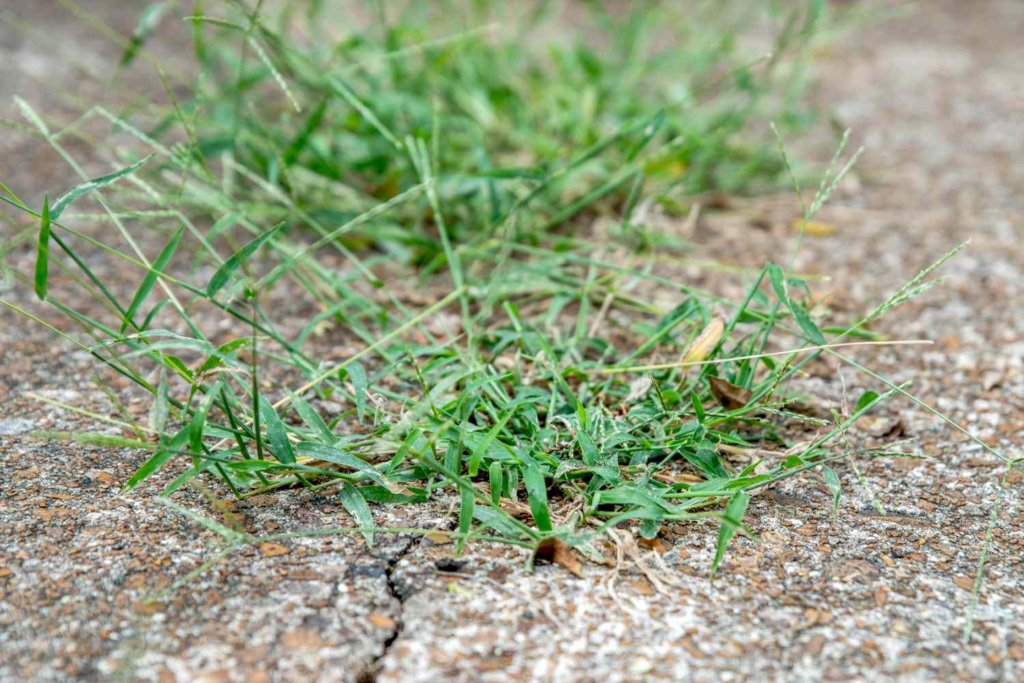
7. Quackgrass (Elymus repens)
This perennial grass features coarse, blue-green blades and spreads via rhizomes. Once established, quackgrass is extremely difficult to eradicate due to its extensive underground network.
Control methods: For small areas, digging out the entire plant including all rhizomes is necessary. For larger infestations, non-selective herbicides containing glyphosate may be required, followed by lawn renovation.
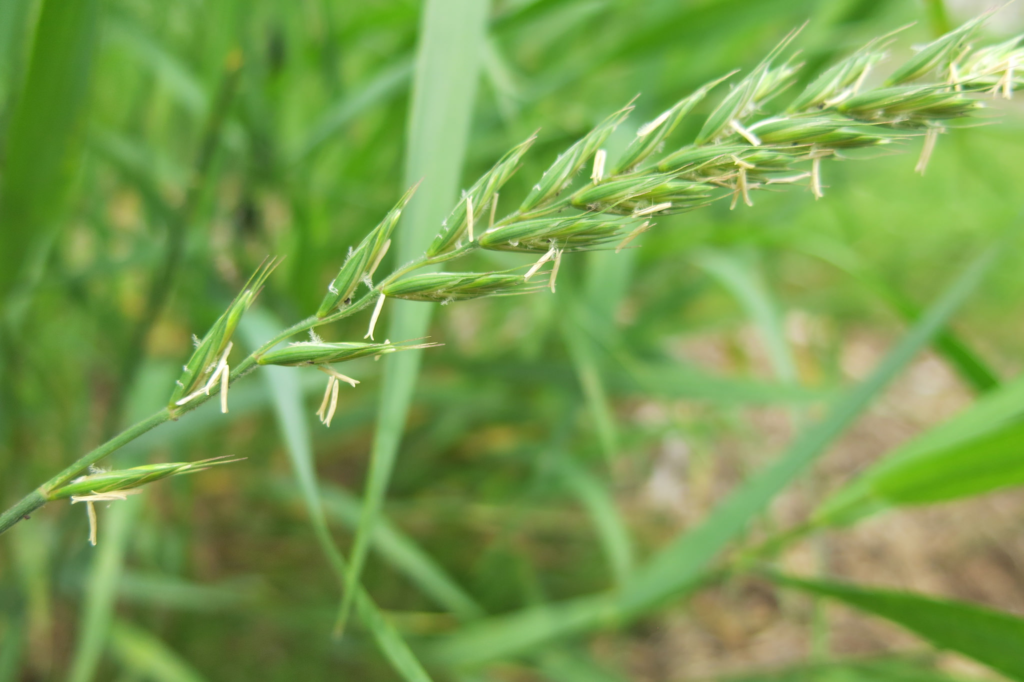
8. Annual Bluegrass (Poa annua)
This light green annual grass produces distinctive boat-shaped leaf tips and small, greenish-white seed heads. It thrives in moist, compacted soils and can complete its lifecycle in just a few months.
Control methods: Proper lawn maintenance including appropriate watering, fertilization, and mowing height adjustments can discourage annual bluegrass. Pre-emergent herbicides applied in late summer help prevent germination.
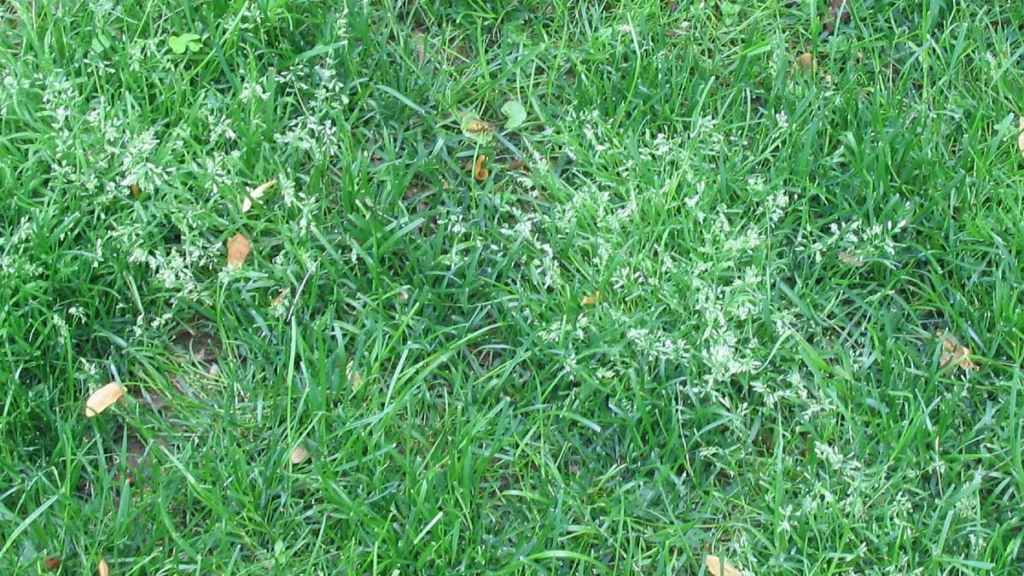
9. Nutsedge (Cyperus esculentus & Cyperus rotundus)
Often mistaken for grasses, yellow and purple nutsedge are actually sedges with triangular stems and produce numerous underground tubers (nutlets). These perennial weeds thrive in wet areas and are among the most difficult to control.
Control methods: Improving drainage is crucial. For yellow nutsedge, pulling young plants before they form tubers can help. Herbicides specifically formulated for sedge control are most effective.
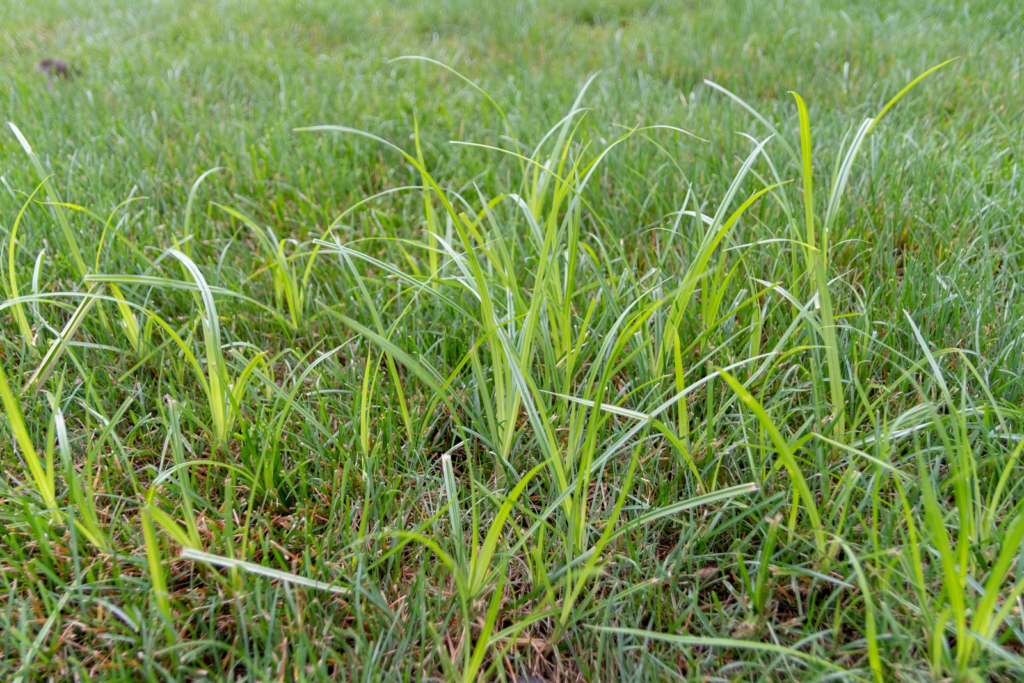
Other Common Weeds
10. Bindweed (Convolvulus arvensis)
Control methods: Persistent removal of top growth to exhaust root reserves is necessary. Sheet mulching with cardboard covered by several inches of mulch can be effective in garden areas. Specialized herbicides may be required for severe infestations.
This perennial vine resembles morning glory with white or pink trumpet-shaped flowers. Field bindweed is particularly troublesome due to its extensive root system that can extend up to 20 feet deep.
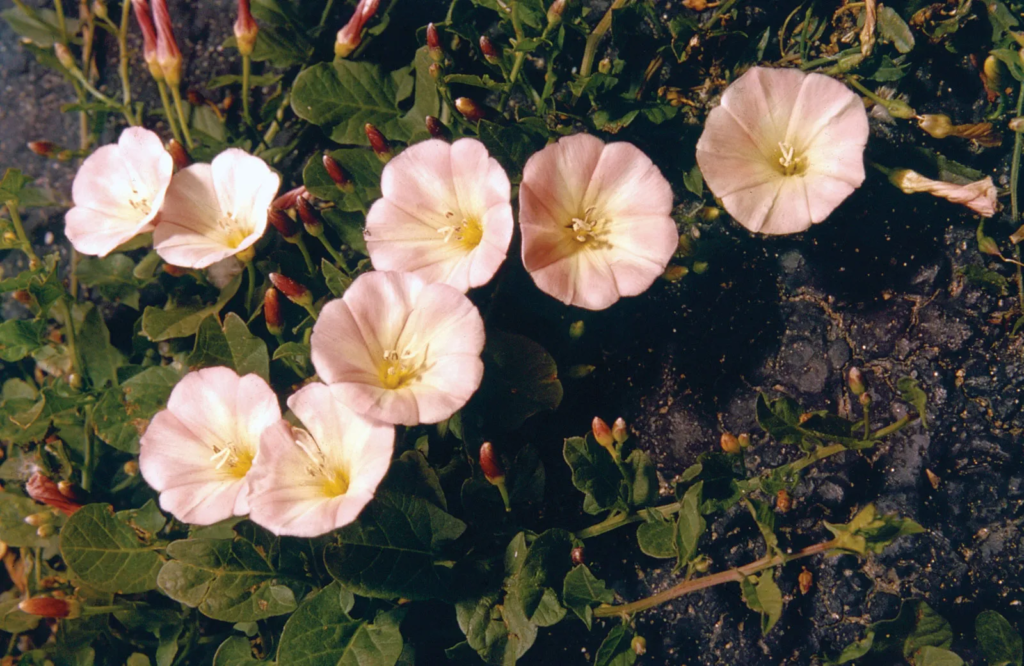
11. Purslane (Portulaca oleracea)
With its succulent, reddish stems and small yellow flowers, purslane sprawls along the ground in hot, dry areas. A single plant can produce over 50,000 seeds that remain viable in soil for decades.
Control methods: Hand-pulling before seed production is effective. Mulching garden beds helps suppress germination. Like dandelions, purslane is edible and nutritious, making it a potential harvest rather than a weed.
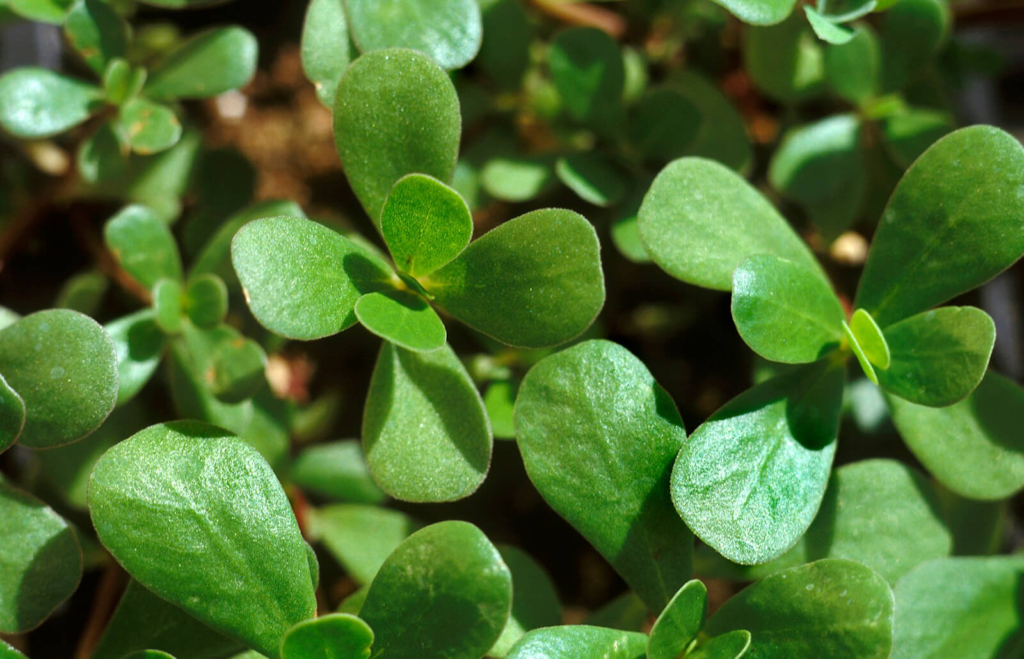
12. Pigweed/Amaranth (Amaranthus spp.)
These annual weeds can grow several feet tall with reddish stems and produce thousands of tiny seeds per plant. They germinate in late spring when soil warms and grow rapidly during summer months.
Control methods: Regular cultivation to disrupt young seedlings works well. Mulching helps prevent germination. Herbicides are most effective when plants are young.
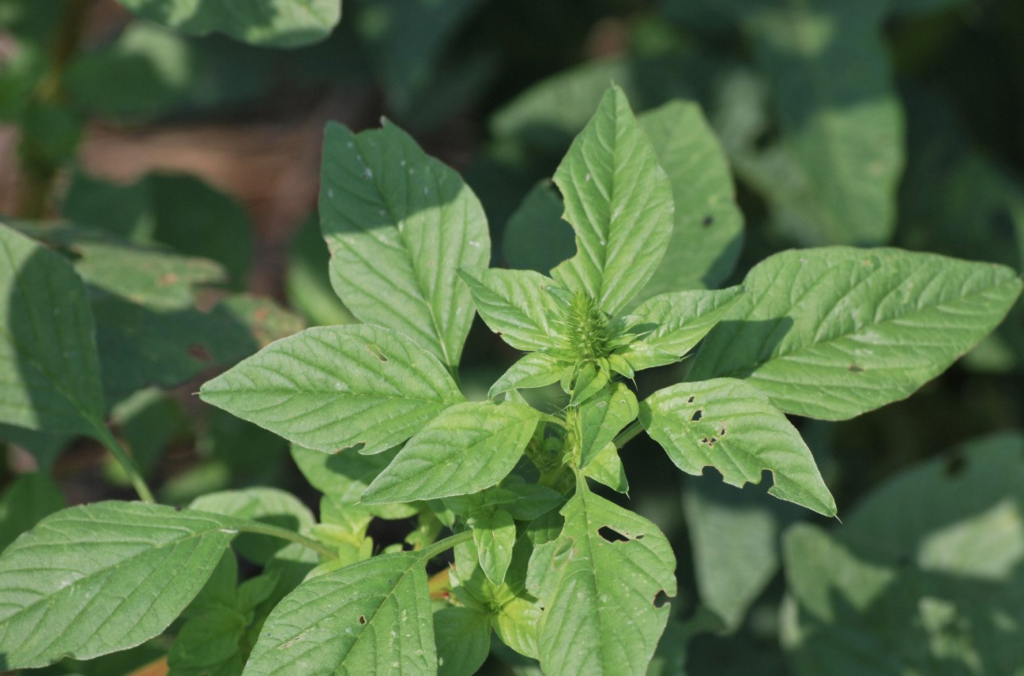
13. Thistle (Cirsium spp. & Carduus spp.)
With their spiny leaves and purple flower heads, thistles are easily recognizable but difficult to control. Canada thistle is particularly problematic due to its extensive root system and ability to reproduce from root fragments.
Control methods: According to the USDA National Invasive Species Information Center, persistent cutting of top growth before flowering depletes root reserves. For established patches, systemic herbicides applied during the bud stage can be effective.
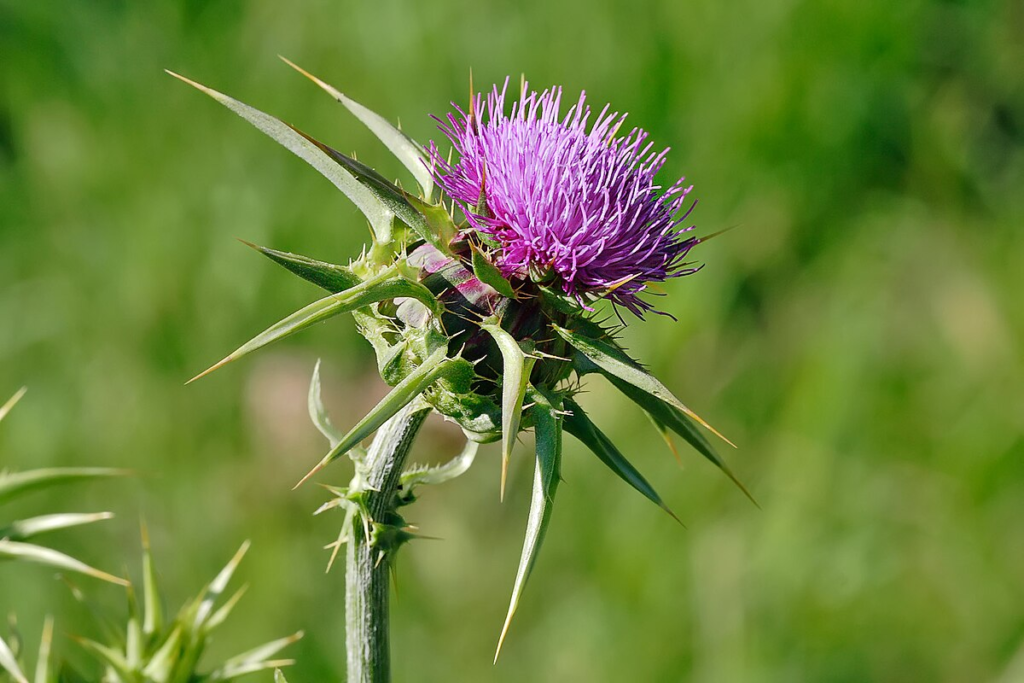
14. Lambsquarters (Chenopodium album)
This annual weed features diamond-shaped leaves with a white, powdery coating on the undersides. Fast-growing lambsquarters can reach several feet in height and produce over 70,000 seeds per plant.
Control methods: Regular hoeing or cultivation of young seedlings provides good control. Mulching helps prevent germination. Like several other weeds on this list, lambsquarters is edible and nutritious.
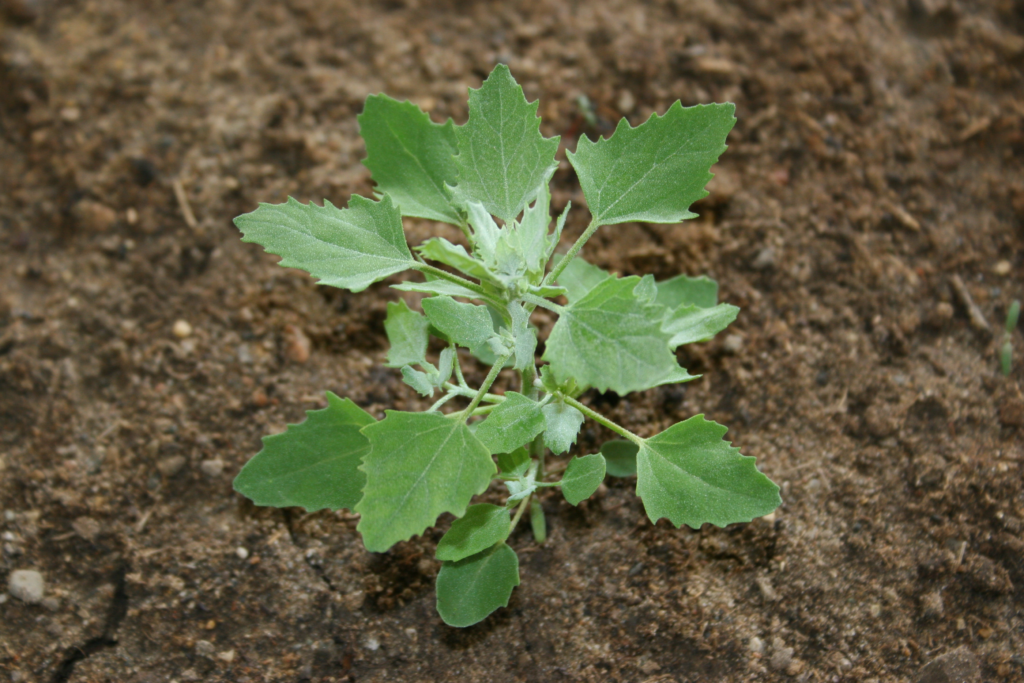
15. Spotted Spurge (Euphorbia maculata)
This annual weed forms flat, circular mats with reddish stems containing milky sap. The small leaves often have a purplish spot in the center. Spotted spurge thrives in hot, dry conditions and produces seeds even when very young.
Control methods: Hand-pulling works well for small numbers, but wear gloves as the milky sap can cause skin irritation. Pre-emergent herbicides applied in spring provide season-long control.
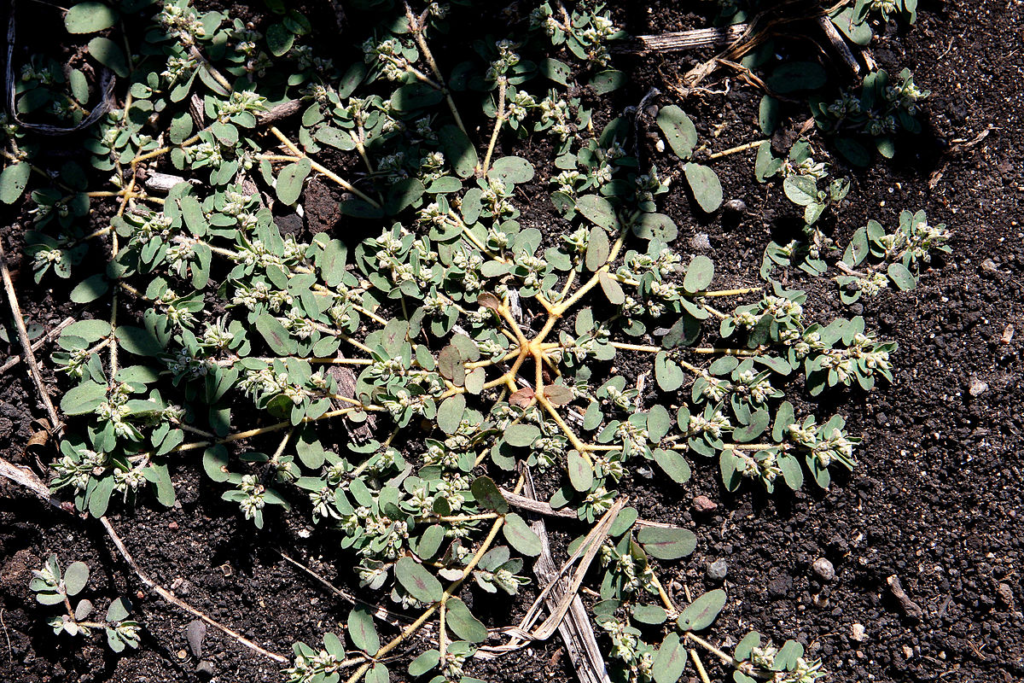
Weed Control Comparison Table
| Weed Type | Life Cycle | Preferred Control Methods | Difficulty Level | Environmental Impact of Control |
|---|---|---|---|---|
| Dandelion | Perennial | Hand-pulling, Broadleaf herbicides | Moderate | Low to moderate |
| Clover | Perennial | Nitrogen fertilization, Selective herbicides | Low | Low |
| Plantain | Perennial | Soil aeration, Broadleaf herbicides | Low | Low |
| Chickweed | Annual | Improve drainage, Pre-emergent herbicides | Low | Low |
| Ground Ivy | Perennial | Improve sunlight, Fall herbicide application | High | Moderate |
| Crabgrass | Annual | Pre-emergent herbicides, Proper mowing height | Moderate | Low |
| Quackgrass | Perennial | Digging, Glyphosate treatments | Very high | Moderate to high |
| Annual Bluegrass | Annual | Proper watering, Pre-emergent herbicides | Moderate | Low |
| Nutsedge | Perennial | Improve drainage, Specialized herbicides | Very high | Moderate |
| Bindweed | Perennial | Persistent removal, Sheet mulching | Very high | Moderate to high |
| Purslane | Annual | Hand-pulling, Mulching | Low | Very low |
| Pigweed | Annual | Early cultivation, Mulching | Moderate | Low |
| Thistle | Perennial/Biennial | Cutting before flowering, Systemic herbicides | High | Moderate |
| Lambsquarters | Annual | Regular hoeing, Mulching | Low | Very low |
| Spotted Spurge | Annual | Hand-pulling, Pre-emergent herbicides | Moderate | Low |
Integrated Weed Management Strategies
Rather than relying on a single approach, successful weed management typically requires combining multiple strategies. Here’s how you can develop an effective integrated weed management plan:
Cultural Control Methods
Cultural practices focus on creating conditions that favor your desired plants while disadvantaging weeds:
- Maintain healthy soil: Proper pH and fertility levels support desirable plants
- Water appropriately: Deep, infrequent watering encourages deep root growth in lawns
- Mow at proper heights: Taller grass (3-4 inches) shades soil and prevents weed germination
- Overseed thin areas: Dense lawns prevent weed establishment
- Use proper plant spacing: In gardens, appropriate spacing allows plants to create shade that suppresses weeds
Mechanical Control Methods
Physical removal or disruption of weeds is often the most environmentally friendly approach:
- Hand-pulling: Effective for small numbers of weeds, especially those with taproots
- Hoeing and cultivation: Disrupts weed seedlings in garden beds
- Mowing: Prevents seed production in lawns
- Mulching: A 2-3 inch layer of mulch prevents weed germination and establishment
Chemical Control Methods
When other methods prove insufficient, chemical controls can be valuable tools:
- Pre-emergent herbicides: Prevent weed seeds from germinating
- Post-emergent herbicides: Control established weeds
- Selective herbicides: Target specific weed types while sparing desirable plants
- Non-selective herbicides: Kill all vegetation and should be used carefully
According to the United States Environmental Protection Agency, always follow label instructions when using any herbicide. Consider environmental impacts and use the least toxic effective option.
Preventing Weed Problems
The most cost-effective approach to weed management is prevention:
- Monitor regularly: Early detection allows for easier control
- Clean equipment: Remove weed seeds from tools, shoes, and equipment
- Use weed-free materials: Ensure soil, mulch, and compost are from reliable sources
- Create barriers: Landscape fabric under mulch can provide long-term suppression
- Maintain healthy plants: Proper fertilization, watering, and maintenance help desirable plants outcompete weeds
When to Consider Professional Help
While most weed problems can be handled by homeowners, some situations may warrant professional assistance:
- Persistent infestations despite multiple control attempts
- Noxious or invasive weeds that require specialized control methods
- Large properties where DIY approaches are impractical
- When physical limitations prevent you from performing necessary control methods
Professional lawn care services can provide targeted treatments, specialized equipment, and expertise that may be more effective for severe or complex weed problems.
Conclusion
Understanding the common weeds in your lawn and garden is the first step toward effective management. By identifying these unwanted plants early and implementing appropriate control strategies, you can maintain a healthier, more attractive landscape with less effort and expense over time. Remember that complete eradication is rarely realistic or necessary—the goal is to keep weed populations low enough that they don’t significantly impact the health and appearance of your desired plants.
With patience, persistence, and the right combination of prevention and control methods, you can gain the upper hand in your battle against common weeds.
